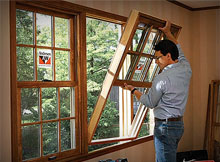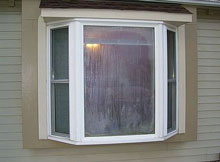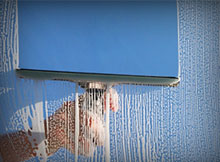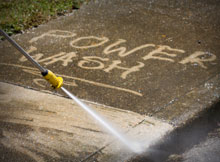Understanding Performance Ratings
What is SHGC?
A simple way to explain SHGC is in terms of a ratio; where 1 is the maximum amount of solar heat gain that can come through a window and 0 is the least amount. An SHGC of 0.40 then means that 40% of the available solar heat is coming through the window. It should be noted that SHGC ratings, like all NFRC ratings, express the performance rating for the entire window, not just the glass. This is important, because SHGC ratings also include the ability of a window to absorb the heat form the sun and transmit it (conduct) through the entire window and into the room. Therefore the type of window, as well as the glass, can affect the SHGC rating.
The majority of this solar heat gain comes through your windows and doors. The most effective way to manage the amount of solar gain that enters your home or office is to block it before it enters. One way to accomplish this is to install windows that have a low Solar Heat Gain Coefficient (or SHGC) rating.
The National Fenestration Rating Council (NFRC) has established a standard method for rating the amount of solar heat gain that is admitted through a window. The lower the SHGC rating, the better the ability of the window to block the heat from the sun.
![NFRC-label[1]](/wp-content/uploads/NFRC-label1.gif)
![]() Solar Heat Gain Coefficient (SHGC) measures how well a product blocks heat from the sun. SHGC is expressed as a number between 0 and 1. The lower the SHGC, the better a product is at blocking unwanted heat gain. SHGC is particularly important in southern climates.
Solar Heat Gain Coefficient (SHGC) measures how well a product blocks heat from the sun. SHGC is expressed as a number between 0 and 1. The lower the SHGC, the better a product is at blocking unwanted heat gain. SHGC is particularly important in southern climates.
![]() Visible Transmittance (VT) measures how much light comes through a product. VT is expressed as a number between 0 and 1. The higher the VT, the more light that comes through the product.
Visible Transmittance (VT) measures how much light comes through a product. VT is expressed as a number between 0 and 1. The higher the VT, the more light that comes through the product.
![]() Air Leakage (AL) measures how much outside air comes into a home or building through a product. AL rates typically fall between 0.1 and 0.3. The lower the AL, the better a product is at keeping air out. Air leakage is an optional rating, and manufacturers can choose not to include it on their labels.
Air Leakage (AL) measures how much outside air comes into a home or building through a product. AL rates typically fall between 0.1 and 0.3. The lower the AL, the better a product is at keeping air out. Air leakage is an optional rating, and manufacturers can choose not to include it on their labels.
Outstanding Reputation · Specializing in Residential Since 1986 · Referral Built Business





